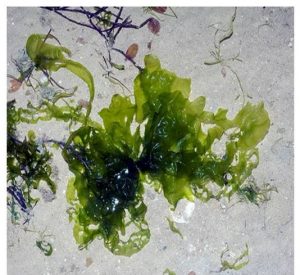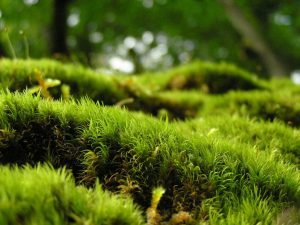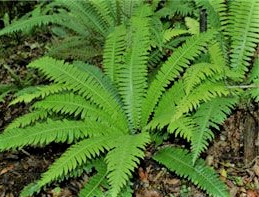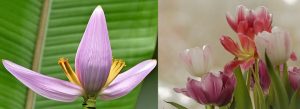We know that all the living organisms on earth are broadly classified into five major kingdoms. The famous scientist R.H Whittaker proposed this five kingdom model in 1969. Moreover, he named the different kingdoms as Monera, Protista, Fungi, Animalia and Plantae. Let us learn about the Kingdom Plantae, popularly known as the Plant Kingdom, its classification and characteristics ,in detail.
The Kingdom Plantae consists of all plants. Furthermore, they are multicellular, eukaryotic organisms with cell wall and vacuoles. They are mostly live anchored to a substrate. This is to say, they are sessile organisms. Moreover, the plastids in a plant cell contain the photosynthetic pigment. This, in fact, makes them autotrophic in nature. In this article, firstly , we will learn the five phylum classification of the plant kingdom. Then, we will also study the major characteristics of each phylum.
Classification of Kingdom Plantae
The plant kingdom is further branched into sub divisions. This is based on factors such as the presence or absence of distinctive body parts and vascular system. Additionally, presence and absence of flowers and seeds and the nature of the seed also defines this classification.
Based on these criteria, the plant kingdom is subdivided into five phylas, namely
- Thallophyta
- Bryophyta
- Pteridophyta
- Gymnosperms
- Angiosperms
Thallophyta
This group includes primitive forms of plant life. Various organisms like algae, fungi and bacteria fall into this category for instance. They are often referred to as thalloid plants.

Characteristics of Thallophyts:
- The body is thallus like. Therefore, they lack a distinguished body structure.
- They may be filamentous or colonial in nature.
- They may have a branched or unbranched body.
- Their body do not have a distinguished root, stem or leaf structure.
Examples: Spirogyra, Ulothrix, Green, red and brown algae.
Bryophyta
This division of plant kingdom consists of about 20,000 plant species. Moreover, it consists of three groups of non-vascular plants, namely, mosses, liverworts and hornworts. Additionally, the ecological importance of mosses is significant. It is because they play a dominant role in plant succession on bare rocks and soil. Bryophyts can live in soil. However, they are dependent on water for sexual reproduction. Therefore, they are usually called the ‘amphibians of the plant kingdom’.

Characteristics of Bryophyts:
- They live in damp, humid and shaded areas.
- The body is thallus –like and prostrate or erect.
- The Rhizoids attach the body to the substratum.
- They lack true roots, stem or leaves. However, they have pseudo structures of roots, stem and leaves.
- They possess well-differentiated sex organs. Antheridium is the male sex organ whereas archegonium is the female sex organ.
Examples: Marchantia, Funaria.
Pteridophyta
These are the first terrestrial plants to possess vascular tissues xylem and phloem. Additionally, they serve a myriad of uses, namely for medicinal purposes, as soil binders, as ornamentals, etc. Most of them are found in cool, damp and shady places. However, some may even thrive in sandy soil conditions. They are often called ‘cryptogams’ since the pteridophytes do no bear seeds or flowers . This is to say, they have a hidden means of reproduction. Ferns and horsetails belong to this group of plants, for instance.

Characteristics of Pteridophyts:
- The main plant body is a sporophyte. Moreover, the sporophytes bear sporangia.
- They may be homosporous or heterosporous.
- The roots, stem and leaves are true and distinguished.
- They have well developed vascular tissue.
- The spores germinate to form gametophytes. Furthermore, they are multi cellular and free living.
- They have multi cellular sex organs. Namely, antheridia (male) and archegonia(female).
- They show distinct alteration of generations. For instance, in the sporophyte and gametophyte generations.
Examples: Salvinia, Selaginella, Ferns.
Gymnosperms
The name gymnosperms derived from gymnos: naked and sperma: seeds. Accordingly, gymnosperms are the plants in which ovules remain exposed without an enclosing wall. This is the case both before and after fertilization. In addition, this group of plants include medium to tall trees o shrubs.
![image_thumb[10]](https://entri.app/blog/wp-content/uploads/2020/09/image_thumb10.png)
- They have a well- defined vascular tissue and body structure.
- Fruit do not enclose the seed. Hence they possess naked seeds.
- The leaves are well adapted to with stand extremes of temperatures. Consequently , they can thrive harsh climatic conditions.
- They are heterosporous. Furthermore, they produce haploid microspores and megaspores.
- The gametophyte generation is limited to a few number of cells. Consequently, this reduced gametophyte is called the pollen grain.
- Subsequent to fertilization, the zygote develops into an embryo and ovules into seeds.
Examples: Cycas, Pinus, Ginkgo, Deodar
Angiosperms
The angiosperms are a remarkably large group of plants. On the other hand, they are found in different sizes ranging from microscopic to over 100 meters tall. Moreover, they occur in wide range of habitats. Their seeds are enclosed in fruits which is in contrast to the gymnosperms. Double ferlilization is yet another unique character of angiosperms. Apart from all of these, they provide us with diverse commercially important products.
There are two classes of angiosperms.
They are: The Dicotyledons and the Monocotyledons. This division of angiosperms is according to the number of cotyledons in their seeds. However, some other structural differences in stem, root, leaf and flower are also considered.

Characteristic differences between Dicotyledons and monocotyledons are as follows:
| Monocotyledon | Dicotyledon |
| A single cotyledon in the embryo | A pair of cotyledons in the embryo |
| Parallel leaf venation | Reticulate leaf venation |
| Fibrous root system | Tap root system |
| Floral parts are in multiples of three | Floral parts are in multiples of four or five |
| Scattered vascular bundles | Ring shaped arrangement of vascular bundles |
| Example: Rice, wheat, maize | Example: Beans, Water Lily, Cinnamon |
In short, appreciating the different types of plant species around us is important. Moreover, the classification of plants has made it easier for us to study the evolution of each species. It gives a proper insight about the uniqueness of each species, for instance. On the whole, the Kingdom Plantae consists of millions of species of different sizes, shapes and structures who live in varying climatic conditions throughout the earth.
Ace you Exam Preparation! Download Entri Today!












